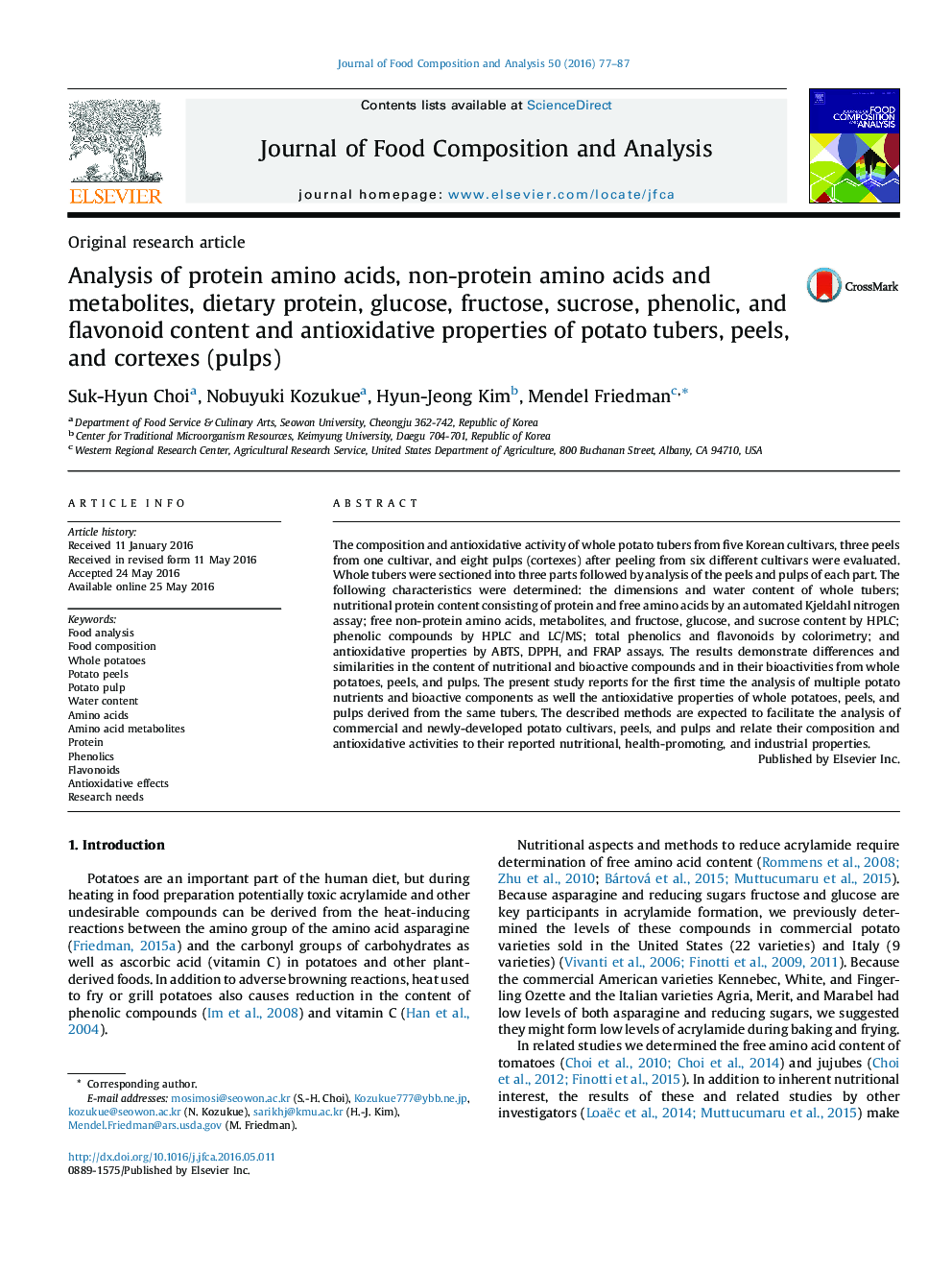| Article ID | Journal | Published Year | Pages | File Type |
|---|---|---|---|---|
| 1218045 | Journal of Food Composition and Analysis | 2016 | 11 Pages |
•Analysis of nutrients and bioactive compounds in whole potatoes, peels, and pulps.•Potato tuber, peel, and pulp compounds possess health-promoting properties.•Asparagine content helps predict acrylamide formation during processing.•Phenolic content is not related to observed antioxidative properties.
The composition and antioxidative activity of whole potato tubers from five Korean cultivars, three peels from one cultivar, and eight pulps (cortexes) after peeling from six different cultivars were evaluated. Whole tubers were sectioned into three parts followed by analysis of the peels and pulps of each part. The following characteristics were determined: the dimensions and water content of whole tubers; nutritional protein content consisting of protein and free amino acids by an automated Kjeldahl nitrogen assay; free non-protein amino acids, metabolites, and fructose, glucose, and sucrose content by HPLC; phenolic compounds by HPLC and LC/MS; total phenolics and flavonoids by colorimetry; and antioxidative properties by ABTS, DPPH, and FRAP assays. The results demonstrate differences and similarities in the content of nutritional and bioactive compounds and in their bioactivities from whole potatoes, peels, and pulps. The present study reports for the first time the analysis of multiple potato nutrients and bioactive components as well the antioxidative properties of whole potatoes, peels, and pulps derived from the same tubers. The described methods are expected to facilitate the analysis of commercial and newly-developed potato cultivars, peels, and pulps and relate their composition and antioxidative activities to their reported nutritional, health-promoting, and industrial properties.
